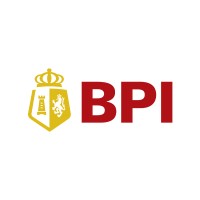
CIMB Niaga
CIMB Niaga was established as Bank Niaga in 1955. CIMB Group holds around 97.9% of the stakes in CIMB Niaga (including PT Commerce Kapital 1.02%). The Bank offers a comprehensive suite of both conventional and Islamic banking products and services, through an expanding delivery channel network of 919 network channels all over Indonesia as at 30 June 2015, including 563 branches, 271 Mikro Laju units (excluding 18 co-located), 65 cash/payment points (including 21 Digital Lounges) and 20 mobile branches. CIMB Niaga has 15,078 employees as at 30 June 2015. CIMB Niaga consistently continue to innovate in the midst of competitive market. CIMB Niaga put customer centric approach to strengthen its positioning in Indonesia banking industry. And for that reason, CIMB Niaga introduced the new brand positioning ‘Inovasi dari Hati’ at the beginning of the year 2015. The new brand positioning also encourages people to share high growth and take advantage of all the potential that the South-East Asia regions bring – in line with CIMB Group’s brand positioning: “ASEAN for You”. CIMB Group is Malaysia’s second largest financial services provider and one of ASEAN’s leading universal banking groups. It offers consumer banking, investment banking, Islamic banking, asset management and insurance products and services. Headquartered in Kuala Lumpur, the Group is now present in 9 out of 10 ASEAN nations (Malaysia, Indonesia, Thailand, Singapore, Cambodia, Brunei, Vietnam, Myanmar and Laos). Beyond ASEAN, the Group has market presence in China, Hong Kong, Bahrain, India, Sri Lanka, Taiwan, the US, UK and Korea. CIMB Group is listed on the Malaysian stock exchange via CIMB Group Holdings Berhad. As at 30 June 2015, the Group had a market capitalization of USD46.4 billion and about 44,000 employees located in 17 countries.






